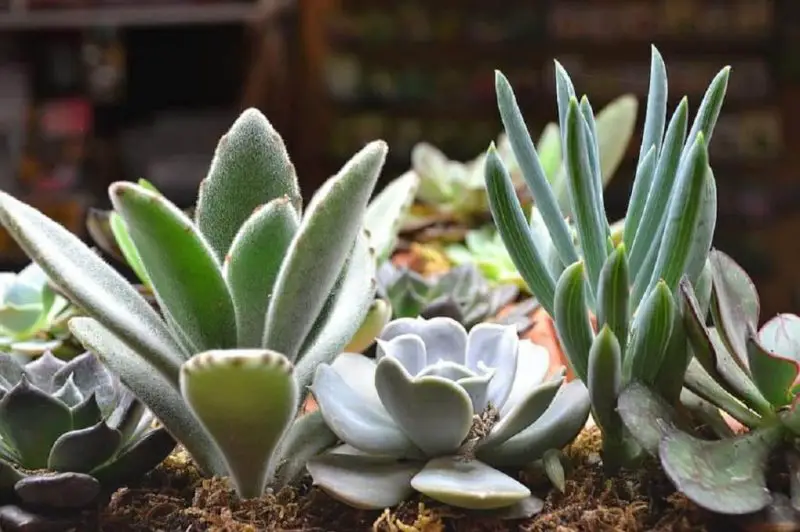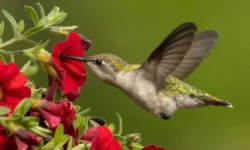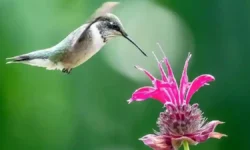Succulents are among the most beloved plants for gardeners and houseplant enthusiasts because of their unique appearance, minimal care requirements, and incredible adaptability. However, one of the most common questions among succulent owners is how much sunlight these hardy plants truly need to thrive. Understanding their sun requirements is crucial for keeping them healthy, vibrant, and full of life.
In this detailed guide, we will explore everything you need to know about succulents and sunlight, including how to identify signs of too much or too little light, the difference between indoor and outdoor sunlight exposure, and the best practices to ensure your succulents stay in their best shape.
Table of Contents
Understanding the Sunlight Needs of Succulents

Succulents have evolved in arid and semi-arid regions, where sunlight is abundant, and water is scarce. Their thick, fleshy leaves are designed to store water, while their unique growth habits allow them to tolerate strong sunlight. Most succulents prefer bright, indirect light or partial to full sun, depending on their species. However, their sunlight needs can vary significantly between desert succulents, such as cacti, and softer-leaved succulents, like Haworthia or Gasteria, which thrive in gentler light conditions.
The general rule is that most succulents need at least four to six hours of sunlight daily to maintain their vibrant colors and compact growth. Without sufficient light, they can become leggy, pale, and weak. Conversely, too much direct sun, especially in hot climates, can cause sunburn, resulting in brown or white patches on their leaves. Therefore, finding the right balance is key to their health and longevity.
The Role of Sunlight in Succulent Growth
Sunlight plays a critical role in photosynthesis, the process through which succulents convert light into energy. Adequate sunlight not only helps these plants produce food but also influences their color, shape, and overall health. Many succulents display their most stunning colors, such as deep reds, purples, and oranges, when exposed to sufficient sunlight. Without enough light, they may revert to green as a survival mechanism.
Moreover, sunlight affects their growth habit. In bright light, succulents remain compact and sturdy, which is a sign of healthy development. In low light, they stretch out in search of more sun, a phenomenon known as etiolation. This stretching makes them appear elongated and weak, reducing their visual appeal and making them more susceptible to disease and rot.
Indoor Sunlight Requirements for Succulents
Growing succulents indoors requires careful consideration of natural light sources. Most indoor succulents thrive near south- or east-facing windows, where they can receive bright, indirect light for several hours each day. Placing them too far from a window can cause them to lose their vibrant color and become leggy.
If your home does not receive enough natural sunlight, you can supplement with grow lights designed for succulents. LED grow lights are energy-efficient and provide the full spectrum of light required for healthy growth. Position the lights about six to twelve inches above the plants and keep them on for twelve to fourteen hours a day to mimic natural sunlight conditions.
Outdoor Sunlight Requirements for Succulents
Succulents grown outdoors often thrive better because they receive natural sunlight, but you still need to monitor their exposure carefully. Most succulents should be introduced to full sun gradually to prevent sunburn. Start by placing them in a location with bright, indirect sunlight for a few hours daily, then slowly increase their exposure to direct sun over one to two weeks.
Desert succulents like agave, aloe, and cacti can handle full sun for six to eight hours daily, while softer succulents such as echeveria or sedum may prefer partial sun, especially during the hottest afternoon hours. Providing some shade during peak sunlight can prevent leaf damage and keep the plant’s colors vibrant.
How to Identify If Your Succulent Gets Too Little Sun
One of the clearest signs that a succulent is not getting enough sunlight is stretching. The plant will grow taller and lean toward the nearest light source in an attempt to capture more sun. Its leaves may become spaced out and lose their plump appearance. In addition to stretching, you may notice a change in color, with vibrant red or purple succulents turning dull green or pale.
Slow growth is another indicator. Succulents generally grow slowly, but in low light, their development may nearly stop. If you notice your succulent looks weak, floppy, or dull, increasing its light exposure gradually will help it regain health.
How to Tell If Your Succulent Gets Too Much Sun
While succulents love sunlight, too much direct sun, particularly in hot climates, can be harmful. Sunburn is a common issue, causing brown, white, or yellowish spots on the leaves. Unlike other plant problems, sunburn damage is permanent, so prevention is essential.
Another sign of excessive sunlight is scorched or crispy leaves. In extreme cases, leaves may dry out and fall off. If this happens, move your succulent to a slightly shadier spot or provide shade during the hottest part of the day. Watering slightly more frequently during intense heat can also help them cope with strong sunlight.
Best Practices for Acclimating Succulents to Sunlight
If you are moving succulents from indoors to outdoors or changing their light conditions, gradual acclimation is crucial. Sudden exposure to intense sunlight can shock the plant and lead to sunburn. Begin by placing the succulent in a shaded or partially sunny area for a few hours daily. Increase sunlight exposure by one hour every few days until the plant is accustomed to its new environment.
When bringing succulents indoors during colder months, place them near bright windows to maintain their light requirements. Acclimation works both ways; transitioning from bright outdoor sun to lower indoor light also requires a gradual adjustment.
Seasonal Changes and Sunlight Requirements
Succulents’ sunlight needs can change with the seasons. During summer, they may require protection from scorching midday sun, while in winter, they need as much bright light as possible, especially if kept indoors. Many succulents enter a dormant phase in winter, meaning they need less water but still benefit from good sunlight to maintain their health.
If you live in a region with shorter daylight hours in winter, consider using grow lights to supplement natural sunlight. This prevents stretching and keeps your plants looking compact and healthy year-round.
The Relationship Between Watering and Sunlight
Sunlight and watering go hand in hand when it comes to succulent care. Succulents exposed to more sunlight tend to dry out faster and may need more frequent watering, while those kept in low-light conditions should be watered less often to avoid root rot. Understanding this balance helps you adjust your care routine according to the plant’s environment.
Always use well-draining soil and pots with drainage holes to prevent water from accumulating at the roots. Succulents exposed to bright sun and proper airflow recover faster from watering and are less prone to fungal diseases.
Choosing the Right Succulent for Your Light Conditions
Not all succulents have the same sunlight requirements, so choosing varieties that suit your environment is essential. If you live in a sunny region or plan to grow succulents outdoors, sun-loving types like cacti, aloe, and agave are ideal. For indoor or low-light areas, opt for varieties like Haworthia, Gasteria, or certain sedum species that thrive in indirect light.
Matching the right succulent to your specific light conditions not only ensures its health but also makes maintenance easier. Understanding each species’ natural habitat gives you insight into how much sun they truly need.
FAQs About How Much Sun Do Succulents Need
Do all succulents need full sun every day?
Not all succulents require full sun daily. While desert species like cacti thrive in six to eight hours of sunlight, softer succulents such as Haworthia or Gasteria prefer bright, indirect light. Matching the light requirements to the species is essential to avoid sunburn or stretching.
Can succulents survive in low-light conditions?
Some succulents can survive in low-light areas, but they will not thrive as they do in bright light. Indoor succulents kept in dim conditions may become leggy and lose their vibrant colors. Supplementing with grow lights helps maintain healthy growth when natural sunlight is limited.
What happens if succulents get too much sunlight?
Too much sunlight can cause sunburn, leaving brown, white, or yellowish spots on the leaves. Prolonged exposure to scorching sun can also lead to crispy, dried-out foliage. Providing partial shade during the hottest part of the day helps prevent damage.
How do I acclimate succulents to outdoor sunlight?
Acclimating succulents to outdoor sunlight should be done gradually. Start by placing them in a shaded or partially sunny spot for a few hours daily, then increase exposure over one to two weeks. This process prevents shock and sunburn.
Do succulents need different sunlight in winter?
Yes, succulents often need more light in winter, especially indoors, because daylight hours are shorter. Using grow lights during this season can prevent stretching and keep them healthy even during dormancy.
Conclusion
So, how much sun do succulents need to stay healthy and vibrant? The answer depends on the species, but most succulents thrive with four to six hours of bright, indirect sunlight daily, while sun-loving types can handle more intense exposure. The key to keeping your succulents happy is observing their behavior—look for signs of stretching, fading color, or sunburn, and adjust their light exposure accordingly. By providing the right amount of sunlight and acclimating them gradually to changes in their environment, you can enjoy colorful, compact, and healthy succulents year-round.






